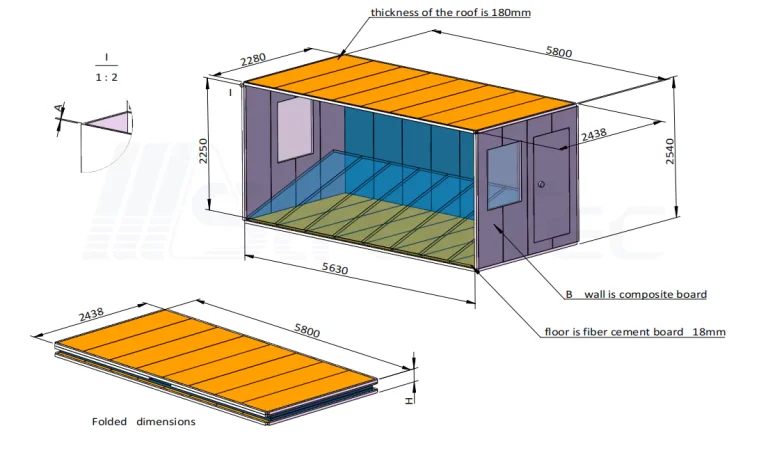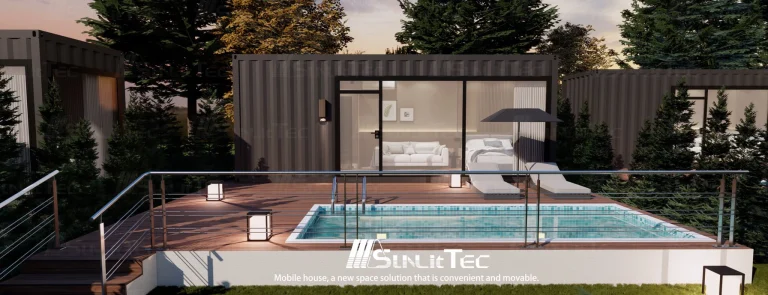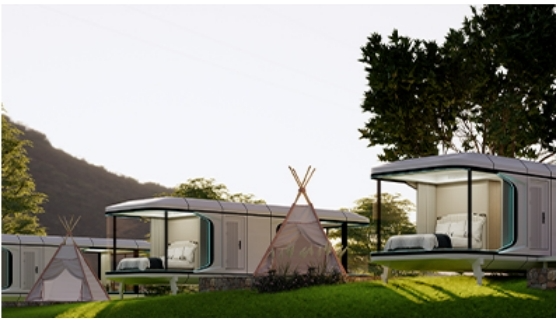
The housing sector is experiencing a significant change. New solutions are tackling global issues like cost, eco-friendliness, and city growth. Among these, container homes stand out as a practical alternative to standard building methods. They use the strength, flexibility, and green qualities of shipping containers. These homes are set to reshape living and business spaces in 2025. This article examines the structural, financial, and design benefits of container homes. It also explores their technology use and rising global popularity. We focus on the creative solutions from Sunlit Tec, a reliable provider in the field.
The Shift Toward Alternative Housing Solutions
Traditional homes are becoming costly and resource-heavy. As a result, options like container homes are growing in appeal. These homes meet urgent social needs. They also align with modern goals like eco-friendliness and adaptability. The sections below explore the main reasons for this change.
Growing Demand for Affordable and Flexible Living Spaces
Housing costs are soaring. Both owning and renting homes are now pricier than ever. This has sparked a need for budget-friendly housing. Container homes provide a cheaper option. Their flexible design allows quick construction. This appeals to young workers, retirees, and those wanting simple lifestyles. For example, these homes can be built fast. They also adapt easily to different needs.
Urbanization and the Need for Compact, Efficient Homes
Cities are growing rapidly worldwide. This growth strains housing markets. Container homes offer a small, practical solution. They need less land than regular homes. Their stackable design suits crowded city areas. Developers can use them to build multi-unit homes or mixed-use projects. These work well in places with limited space. Thus, container homes help solve urban housing shortages.
Environmental Concerns Driving Sustainable Construction Trends
Eco-friendliness is a major focus in building today. Container homes can include energy-saving features. Examples include solar panels and strong insulation. These lower their environmental impact further. The mix of affordability, urban fit, and green benefits makes container homes a strong choice.
The Structural and Functional Advantages of Container Houses
Container homes offer unique benefits compared to standard building materials. Their strengths make them a sturdy and useful option for modern homes.
Durability and Strength of Steel-Based Architecture
Shipping containers are built to endure tough conditions. They handle extreme weather and heavy loads during global shipping. This strength carries over to homes. It ensures long-lasting structures. The homes are also safe for residents. They resist damage well.
Fire Resistance, Weatherproofing, and Thermal Performance
Container homes are naturally fireproof due to their steel build. They also withstand storms, strong winds, and moisture. With proper insulation, like foam or panels, they keep indoor temperatures comfortable. This works year-round. These qualities make them reliable in various climates.
Modular Design for Scalability and Versatility
Container homes have a flexible, modular design. This allows easy expansion. Multiple containers can be stacked or arranged to form larger homes or complexes. This adaptability suits many uses, from family homes to business spaces. Few changes to the structure are needed.
These structural strengths make container homes dependable. Their financial benefits further boost their appeal as a game-changing housing option.
Economic Benefits of Container Housing
Container homes offer clear financial advantages. They attract both builders and homeowners. By using existing materials and simple construction methods, these homes cut costs without losing quality.
Reduced Construction Time Compared to Traditional Homes
Container homes are built much faster than traditional houses. Pre-made containers arrive ready to assemble. This shortens project timelines greatly. The speed is especially helpful in urgent cases. For instance, disaster relief or fast city growth benefits from quick construction.
Lower Labor Costs
The assembly process is simpler. It requires fewer workers and less time. For example, Sunlit Tec’s C2 model is built for quick on-site setup. This cuts labor expenses further.
Long-Term Cost Efficiency Through Reusability
Container homes are reusable. They can be moved or redesigned as needed. This flexibility saves money over time. Homeowners can relocate their homes or change their purpose without spending much. This makes container homes a smart long-term investment.
Design Flexibility and Customization Options
Container homes offer great design freedom. They can be customized to meet personal or business needs. This versatility drives their popularity across different fields.
Tailoring Layouts to Individual or Commercial Needs
Container homes can be shaped for many purposes. These include cozy homes or large business spaces. Their modular design lets architects create unique layouts. The setups match specific needs easily.
Residential Units: Studios, Multi-Family Homes, Vacation Cabins
For homes, container houses can be small studios for one person. They can also be larger homes for families using multiple containers. Additionally, they work as vacation cabins in scenic spots. Sunlit Tec’s Double-Storey Triangle House C7 offers a roomy design. It suits families or retreats well.
Commercial Uses: Pop-Up Shops, Offices, Cafés
For businesses, container homes serve as pop-up stores, modern offices, or stylish cafés. Their portability and attractive look make them ideal for creative, mobile businesses. They stand out in busy markets.
Interior and Exterior Design Potential with Modern Aesthetics
Container homes can have sleek, modern designs. Features like large windows and open layouts are common. Exteriors can include stylish coverings. Inside, high-quality finishes like wooden floors or simple fixtures create welcoming spaces. These design options make container homes appealing and functional.
Technological Integration in Modern Container Houses
Modern container homes use advanced technology. This boosts comfort and efficiency. These features meet the demand for smart, green homes.
Smart Home Features Adaptable to Modular Units
Container homes can include smart systems. These cover lighting, temperature control, and security. Such technologies improve convenience. They also save energy. This makes container homes ideal for tech-focused residents.
Energy Efficiency Through Insulation and Solar Compatibility
Strong insulation ensures energy savings. Compatibility with solar panels lets these homes work off-grid. These features cut utility bills. They also support green living goals. This aligns with global environmental efforts.
Site Preparation and Installation Considerations
Good site preparation ensures safe and effective container home setup. The following factors support stability and functionality.
Required Foundation Types for Safe Installation
Container homes need a solid foundation. The type depends on the land and purpose.
Hardened Level Ground Requirements
For flat, stable land, a hard, level surface works. It keeps the container steady. No shifting occurs.
Concrete Pillars or Cement Foundations for Uneven Terrain
On uneven or hilly land, concrete pillars with steel bolts are used. Alternatively, cement foundations work. These provide a firm base for sloped or irregular surfaces.
Optional Trailer Frame for Mobility
For mobile homes, a trailer frame can be added. This lets the home move without losing strength. It suits temporary or changing locations.
Transportation Logistics and On-Site Assembly Process
Container homes, like Sunlit Tec’s C2 model, are built for easy transport. Parts are shipped separately. They are assembled on-site quickly. Good planning ensures smooth delivery and setup.
Global Adoption Trends Leading into 2025
Container homes are gaining ground worldwide. Supportive policies and creative projects drive this growth. The trends below highlight their rising acceptance.
Government Policies Supporting Modular Housing Initiatives
Many governments promote modular homes. They aim to fix housing shortages. Benefits like tax breaks or simpler rules encourage container home use. This happens in both cities and rural areas.
Urban Projects Incorporating Container Communities
Cities are using container homes in community projects. These create affordable housing or mixed-use spaces. Such projects show how scalable container designs are.
More Frequent Natural Disasters
Natural disasters are increasing. Container homes offer a fast, sturdy solution for emergency housing. They can be set up quickly. This makes them perfect for disaster relief.
International Success Stories Inspiring Broader Acceptance
Container villages in Europe and green resorts in Asia are success stories. They show the flexibility and appeal of container homes. These examples encourage wider use globally.
A major player in this change is Sunlit Tec, a trusted provider of container homes.
Introducing Sunlit Tec: A Trusted Supplier of Container Houses
Sunlit Tec leads the container home industry. They offer high-quality, adaptable solutions for various needs. The sections below highlight their expertise and products.
Company Background in Steel Structure Manufacturing
Sunlit Tec started with steel structure expertise. They have years of experience. This ensures strong, reliable container homes. Their products meet global standards.
Double-Storey Triangle House C7 Modular Container House
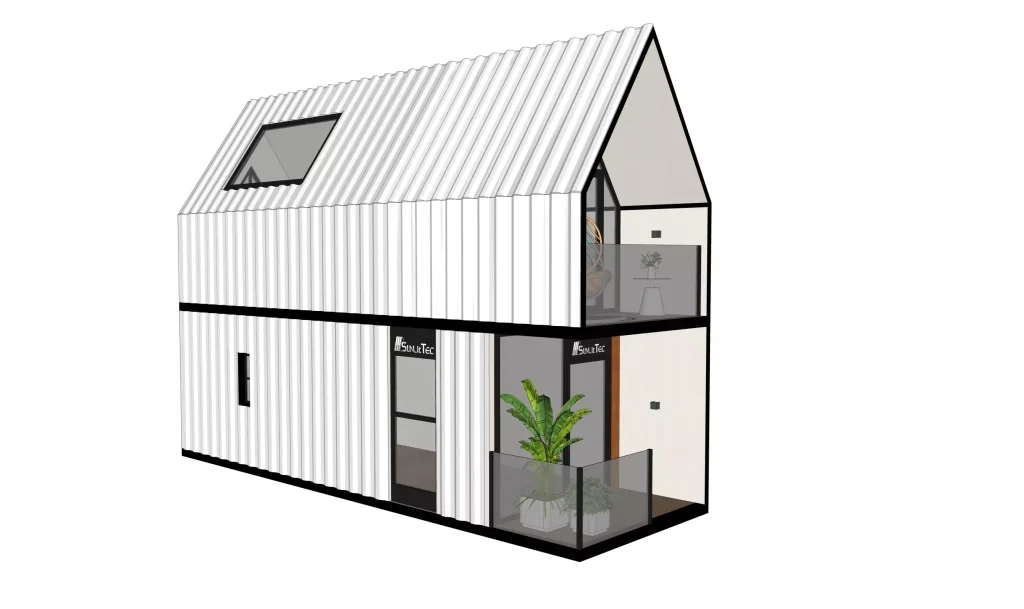
The Double-Storey Triangle House C7 is a top product. The double-layer design provides a villa experience at a price less than 1/10 of that of a traditional villa. It has a spacious, modern design. It suits families or business uses. The high-strength hot-dip galvanized steel pipe keel is welded, with a seismic resistance of 9 and a wind resistance of 12. Its modular structure allows easy customization.
C2 Can Be Shipped by Piece Container House
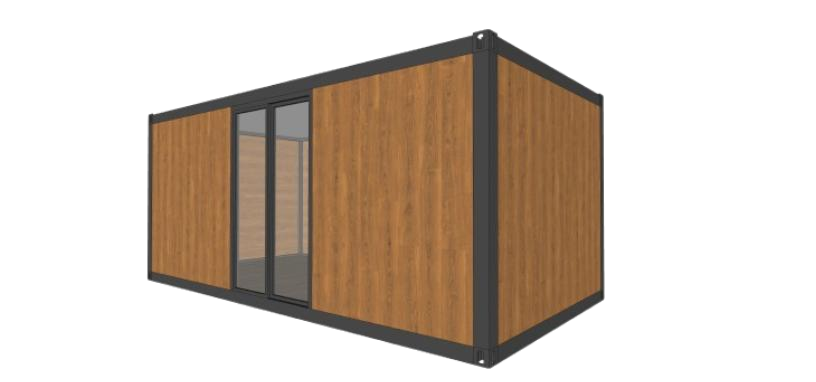
The C2 model is built for easy transport. It is shipped in parts. On-site assembly is quick. This makes it ideal for remote or urgent projects. The area of C2 container houses is relatively small, making them very suitable for single people to live in or as small shops.
Global Market Presence Across Continents
Sunlit Tec serves clients worldwide. They deliver container homes to many regions. Their global reach shows their focus on quality and innovation. Sunlit Tec’s creative solutions make them a leader in the container home revolution.
Conclusion: Embracing the Future of Sustainable Living with Container Houses
Container homes offer a new approach to housing. They blend affordability, strength, and eco-friendliness. As cities grow, environmental concerns rise, and budgets tighten, these homes stand out. They meet modern needs effectively. With companies like Sunlit Tec offering reliable, adaptable options, sustainable living is closer than ever. Container homes are set to lead housing in 2025.
FAQs
Q1 Can container houses be customized?
A: Yes, they can be tailored. Companies like Sunlit Tec offer designs for homes, businesses, or mixed uses. They include modern looks.
Q2 What foundation is required for a container house?
A: A hard, level surface works for flat land. For uneven areas, concrete pillars or cement foundations are used. A trailer frame adds mobility.
Q3 Do container houses support smart home features?
A: Yes, they can include smart systems. These cover lighting, temperature, and security. Energy-saving features like solar panels are also possible.

